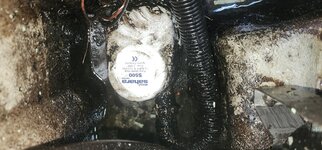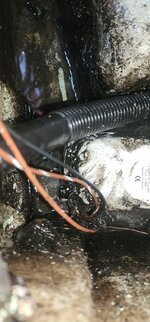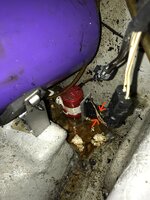Last year I bought a 2001 Challenger (not the 180 or the 200). It had been left out in the sun, in a driveway for 3 years and was a mess. I spent the summer working on the engines and doing some paliminary clean up of the interior. I knew nothing about jet boats or Rotax engines going in and have survived mostly due to forums like this one. Two weeks ago I reached the point where both engines were running well and it was time to find out if it was worth redoing the seats. So I launched it into my local lake and started the engines. It all worked but with both engines, as soon as I got above 4500 rpm each engine would rev to redline and there would be no power. I've been reading the forums so I immediately knew that this was cavitation and I would need to pull the boat out of the water and rebuild the jets. That would be my winter project but for now I would just use the boat as is even though it had a max speed of 6 mph. There were still plenty of little things to do like getting the stern navigation light to light and finding the fuse for the automatic function of the bilge pump. As I was looking for the bilge pump I noticed that there were grease fittings on the drive shafts. I am a former grease monkey at a car dealership so if there is a fitting, I'm going to grease it, which I did. Still no luck with the pump, I decided to go for a slow spin. Wow! I suddenly had power above 4500 rpm and boy, does this thong go. I was doing 50 mph (GPS measured) without taking the throttles to the stops. It was so fast that it was scary. Needless to say, I was thrilled. Because I had made several changes that day I was not sure which one had made the difference and went back to the forums to figure it out. I still couldn't determine what had made the difference but the following day I found the situation back to a 4500 rpm cut off. I pulled out the grease gun and did both shafts. The result was as I had hoped and I got full speed from the boat again. So does this mean that I need to grease the safts every time I go out? Can anyone tell me where the contacts for the auto bilge pump function are located? I'm hooked on this boat and will be rebuilding the interior this winter.
RESTO Amazing discovery
- Thread starter wvanderc
- Start date






